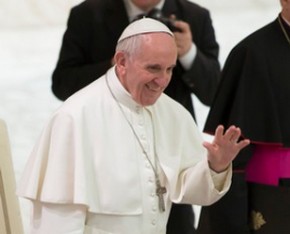The logic of charisms/8 - Small personal thresholds of self-segregation can lead to high walls.
by Luigino Bruni
Published in Avvenire 07/11/2021
"It is precisely the subtle feeling of helplessness, the idea of chasing something that continually escapes our understanding that lies at the roots of our discomfort today."
Mario Pomilio, Industrial notebook (Taccuino industriale, 1945-1980)
Unwanted phenomena occur at a collective level in society and in organizations that no one would want on an individual level. Phenomena that are also found in the dynamics of communities.
Our civilization has a great love for individual freedom and protects the private sphere of individual preferences with all its strength. For at least half a century, modern Western society itself has developed a series of theories and analyzes to study the failures of the sovereignty of the individual. Those cases in which the game of choices based on individual preferences ends up producing perverse collective effects. Because the "invisible hand" that transforms and aggregates the choices of individuals does not always generate good collective transformations, neither for individuals nor for societies.
A classic and pioneer of these studies is the Nobel Prize winner in Economics Thomas Schelling, who has shown, among other things, that the culture that is established in a community is different from the preferences of the individual members that compose it. His study on involuntary racial self-segregation in housing choices ("Dynamic models of segregation", 1971) is well known. In it he demonstrated that in order for segregated neighborhoods of only whites and neighborhoods of only blacks to be formed in a city, there is no need for individuals to think: "I want to be in a neighborhood of only whites" or "only blacks." Instead, it is enough for white (or black) inhabitants to think: "I do not want to live in between two houses belonging to black (or white) families", and in some cases even, "I do not want to live next to three families that are different from mine", is enough. These individual preferences, which in themselves would not seem radical, produce a radical outcome, however, and we find ourselves in a world that no one would want or wished for.
All this applies to ethnic segregation but also to any form of collective intolerance, because a radically racist and intolerant culture can be generated by not so racist and intolerant people if taken one by one. That small "threshold" of closure that I impose on myself, which does not appear particularly intolerant to my conscience, ends up becoming a high wall combined with the small thresholds of others. As if a worm would insinuate itself in that limit that I put on my tolerance and diversity, interacting with the woodworms of others, thereby eroding the root of civil coexistence. To avoid these sad and involuntary outcomes, we need to educate ourselves to keep our thresholds of intolerance decisively low, perhaps even eliminate them - this is where every educational challenge lies in large part. Because these studies tell us that collectivities tend to amplify the barriers of their individuals, not reduce them. The speck of dust in the eye of the «I» becomes a beam in the eyes of the «we»; and once it has been created, that beam takes the place of the speck and prevents everyone from seeing.
Schelling's analyzes are among the most important in contemporary social sciences. Today they are also applied to climatic phenomena and consumer choices, where we find ourselves with very serious and unsustainable collective and global situations even when the preferences of individual people would be more ecological. These outcomes do not depend only on the indirect effects of our choices (the known "externalities"), but on more complex phenomena that are triggered by aggregating the preferences of single individuals.
All of this is also particularly relevant for all types of organizations and communities. Each community generates its own collective culture and an identity that is very evident to those who observe it from the outside - a little less so to those who look at it from within. Here too, the culture and practices generated tend to come out more radicalized than the preferences of each individual member. The community culture that we observe is not a picture of the culture of individuals. Each community develops its own style, its own spiritual personality, its own language and jargon with specific features and expressions that can only be understood by the members of the community; it generates ways of praying, of moving, with winks, gestures, a particular style of clothing... which are also self-reinforcing with the passage of time. These collective traits are neither the average nor the sum nor the product of the behavior of individuals, nor the result of the imitation that everyone does of a specific leader (like what happens with fashion trends instead). Certainly, unlike other institutions and organizations, in charismatic communities the founder has a special role, but the collective culture is not the founder's blow-up, nor is it wanted by him - in these processes the founder certainly has more weight and importance than the rest, but not enough to determine the collective culture. The same internal currents that are formed in communities, i.e. the minor circles and sub-groups, which characterize all levels including the very composition of the tables in the canteen, are often generated by people who, taken one by one, would be more open and dialogic than in the closed groups to which they give life. Isolation and self-referentiality, which appear on the outside as important and characteristic traits of charismatic communities, are often phenomena of involuntary self-isolation.
In order for segregated communities to be born, where members only meet with and socialize with the people of their own community, there is no need for people who do not like having social relations outside the community. In keeping with the parameters of Schelling's model and extending its logic, it is enough that individual members start thinking: "I like to hang out with people from other groups and communities, but every two or three meetings I would like to do at least one only within my community". Once again, an individual preference, that is not particularly close-minded or anti-social which, however, can involuntarily end up generating strong collective closures and self-segregation. This explains, among other things, a common and for many mysterious fact, namely communities that as a whole present themselves (and often are) closeted and self-referential, however when you meet with individual members and enter into a relationship of confidence with them, you find that individually they are very open and sociable. To the point where one will sometimes exclaim: "But how did such a person end up in such a community?" To this exclamation, Schelling would reply: "Look, the community didn't want to end up in this community either! It ended up there unintentionally".
However, are these diseases and neuroses preventable or curable? First of all, to be honest, charismatic communities almost inevitably develop these results anyway, they are in fact forms of auto-immune diseases, but they can be more or less serious depending to the measures that are adopted. To really prevent them - since an ex-post cure is almost impossible - we would need people with very low opening thresholds (1 in a scale of 1 to 5, for example), or with zero thresholds. Nevertheless, no community can be born if the members do not meet each other and do not renounce to some degree of freedom of their former sociality. The more a community needs to develop particularly strong bonds of belonging, the more likely self-segregation will be, where the degree of initial partial openness of the individual will collectively become closure. Thus, many people enter communities with a genuine desire to continue belonging to other vital worlds and social circles and to continue cultivating other external relationships, and then end up finding themselves in communities where they only meet people from the same community; moreover – and this is an interesting point - it happens without people having changed their individual preferences. Although with the passage of time, it is both possible and probable that individual preferences will eventually change day by day unconsciously, and align themselves with collective practice.
Finally, these involuntary mechanisms can help to explain (or at least offer an insight into) other similar phenomena that occur at the level of single individuals and within communities. Sometimes I have come across religious communities where it was very difficult to "reach" into the soul of individual members, who preferred to spend many hours in prayer or adoration rather than talking a few minutes with me or with other members of their own community. Prayer became a sort of immunitas that protected them from communitas, an invisible curtain that immunized them from an authentic and immediate encounter with others. These outcomes can (in part) be explained with the same logic. For a community to find itself only with people who no longer interact with each other but instead spend all their free time in the chapel, it is sufficient that each member cultivates this type of preference: "I like being with the other people in the community, of course, but every two or three meetings, I want to have a 'meeting' alone in the chapel". Again, "slight" individual preferences, once aggregated collectively, generate self-segregated people - another form of "death" or serious illness in a community. Hence, it is also understandable why it is common for members of charismatic communities to reduce their network of deeper friendship relationships, both within and outside the community, over the years.
Social norms, good rules and community regulations are also meant to prevent these diseases. But in a time when the sovereignty of the individual and the (necessary) respect for privacy have finally become important even within spiritual communities, it is becoming increasingly difficult to implement actions and rules that break these involuntary traps. The real possible prevention is then to work on the awareness of the existence of similar involuntary closing mechanisms. All members of a community should regularly ask themselves: What are the invisible stakes I have placed on my relationships? How many relationships am I living with "inner thresholds"? How many vital communities or groups of my past am I progressively losing? What is the variance of my relations? What and how many degrees of intolerance am I cultivating within myself? Difficult self-tests of discernment, but not impossible, especially if the community offers tools to carry them out, perhaps together, even when there is no discernable need. Communities should include procedures similar to the health "screenings" that people must do when they pass a certain age, regardless of symptoms, for preventive purposes only. Not an easy choice for those responsible, because of the perceived risk that someone could discover the disease after doing the test, that by answering these difficult questions people could go into a crisis and maybe end up leaving the community.
However, their awareness of the potential damage that could be caused by the lack of this kind of prevention should be stronger, including the extinction of the community itself. Because, while in the first phase of community development, the preferences of the individual members are usually less rigid than the collective culture, starting from the second generation, people are attracted above all to the collective culture that has been generated involuntarily. Therefore, without anyone wanting it, the few new "vocations" that come will generally be more closed than the early members were - once we become a "white only" neighbourhood we will only have new white neighbours. Newcomers with higher thresholds increase community closure, giving rise to a degenerative vicious circle. This is how communities often disappear involuntarily, if we do not intervene decisively and in time, in an obstinate and opposite direction.








